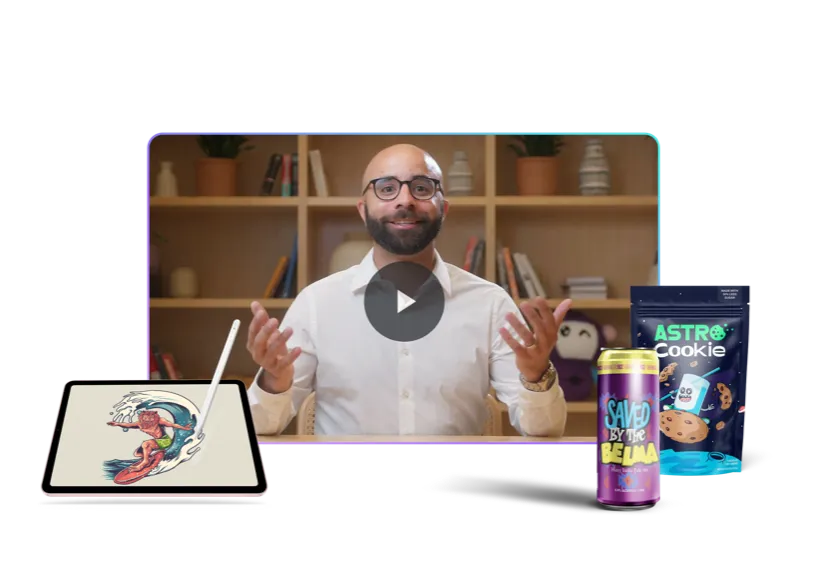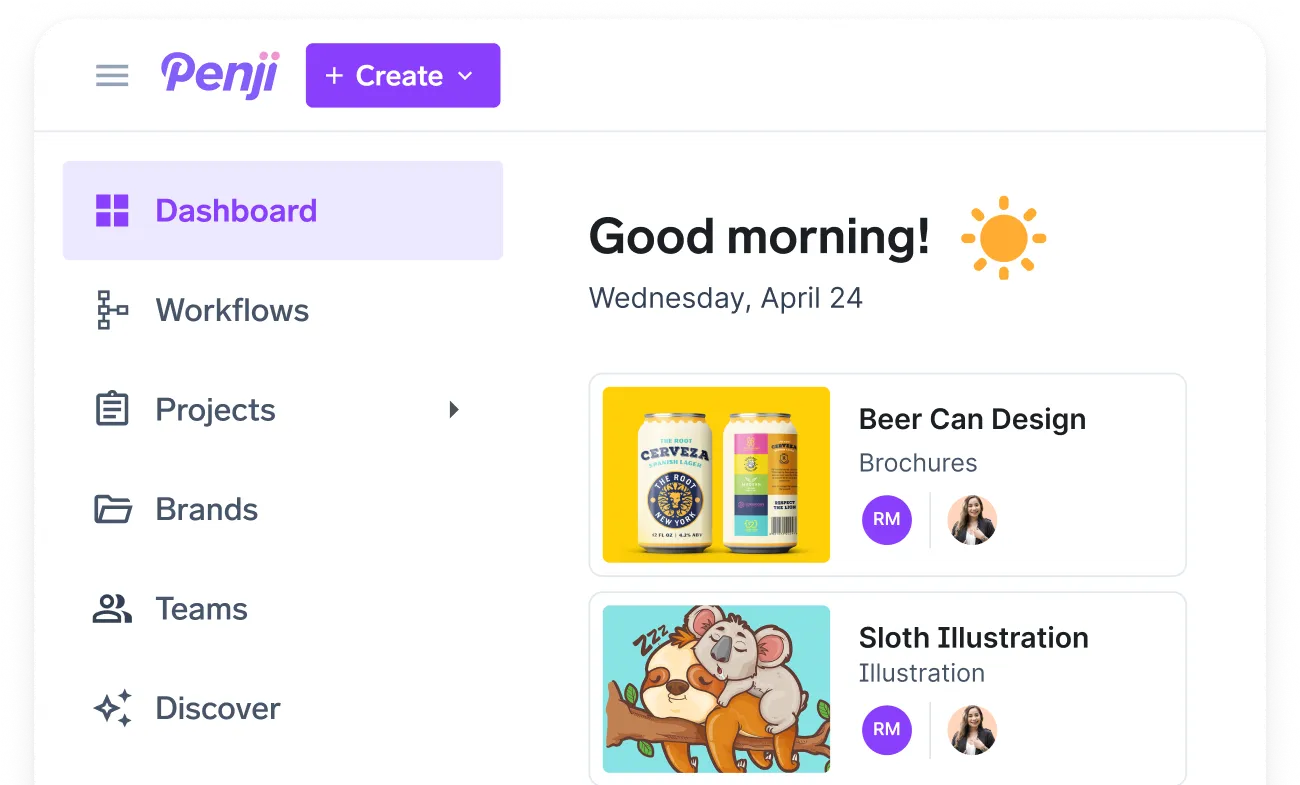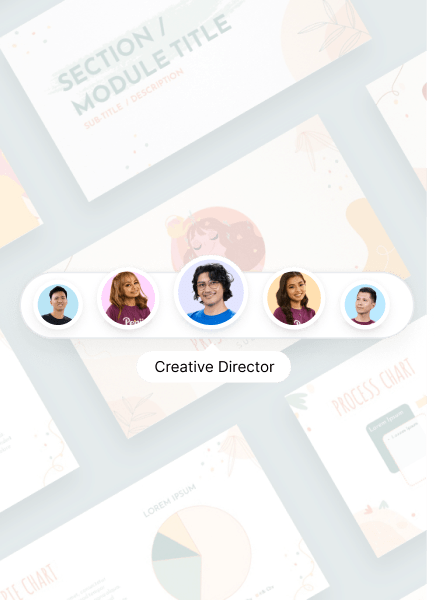![[Fully Managed] Matt Vucic from Greyburn Productions Ep. 177](https://penji.co/wp-content/uploads/2025/08/BLOG-IMAGE-Matt-Vucic.jpg)
Shannon: Hello, everyone, and welcome to the Fully Managed Podcast. Thank you so much for joining me. Thank you so much, Matt, for joining me.
Matt: Of course. Nice to be here. I really appreciate it.
Rapid Fire Philly Questions
Shannon: So today we’re going to start with a game, as usual, get you on your feet, get you excited about Philadelphia, my favorite thing to talk about. So we’re going to start with our rapid fire Philly questions. This is not a quiz. You cannot get anything wrong unless you give a really bad recommendation and I go there and I’m really mad at you for it. But other than that, this is not a quiz. So first thing I’m gonna ask you is what is the first word that you think of when you hear Philadelphia?
Matt: Brother.
Shannon: That’s fair, the city of brotherly love even though it is founded on a farce fun fact. Like the entire story historically of brotherly love, but anyway I still think there’s brotherly love and camaraderie here regardless of the foundation of propaganda I guess that was fed to the area of what brotherly love means anyway. What celebrity do you think of when you think of Philadelphia?
Matt: Kevin Hart.
Shannon: Yeah, that’s really fair. I’ve gotten that one before. I get, as long as you don’t say Rocky, I think that you’re good. Bradley Cooper’s another one.
Matt: That’s a good one. That’s a new one, which is interesting because I would think that people will think about them more. Yeah.
Shannon: Favorite cheesesteak spot.
Matt: I knew that was coming. So pretty close to me is D’Alessandro’s if I’m pronouncing that correctly.
Shannon: Are you in Manayunk-Roxborough area?
Matt: No, I’m in Chestnut Hill.
Shannon: I am in Roxborough area. Got it. Okay. Sweet. Yeah, D’Alessandro’s is great. It has a huge line, though. The place across the street, Chubby’s? I think it’s Chubby’s, right?
Matt: Yeah, I think so. Really good. No line ever. Recommend. Maybe not as good as D’Alessandro’s. I honestly have never compared them back-to-back, but they’re both great.
Shannon: Got it. Okay. Anyway, just a little new advice. What’s one small business you frequent the most?
Matt: That’s a great question. You know, nothing comes to mind, unfortunately. I should get out a little more often.
Shannon: Yeah, Chestnut Hill has some great spaces, too.
Matt: Wait, that’s not true. Here, there is locally to me, and I think they have a few locations in Philadelphia area, but there’s a coffee shop that does coffee and whiskey. It’s Char and Stave, I believe is what it’s called.
Shannon: I will be going there.
Matt: Yeah, it’s really, really good. Really good. So there you go. There is a co-op by, I mean, there’s multiple of them in this area. Oh my God, I wish I could remember the name. I’m so bad at that. Anyway, if you look up a grocery co-op, this is like very locally sourced goods. I love going there.
Shannon: You mean Weaver’s Way?
Matt: Yes. Thank you. I’m so bad with names. It’s like the worst thing ever. I’ll go to some place ten times and I’ll never remember. Love that place.
Shannon: Nice. Very, very, very lovely foundation. What’s your favorite place for a drink or a meal? This might, you can’t use the previous one.
Matt: There is a Northern Italian restaurant in East Falls and the name is escaping me. It’s okay. Fiorino’s. I think that’s it. I think that’s it. Yes. I could be botching that, but it is very, very good.
Shannon: Thank you. This is literally selfishly for me to just get new places to go to. I get it. If you were to change something about Philadelphia, what would it be?
Matt: Change? Fix the potholes? It’s bad here. It’s really bad. My theory in Chestnut Hill is that because there’s a lot of wealthier people in the area, I think that they just don’t want to fix them because they don’t want anyone else coming there. They got the big cars. They got that. They’re like, we can get through the potholes, but the people that are coming here can’t.
Shannon: Yeah. Yeah. It’s pretty bad. It’s really bad. Sometimes I think it’s worse than the city. Anyway, last one. What’s your favorite neighborhood?
Matt: Yeah. I’m partial to Chestnut Hill. It’s sleepy and I kind of like that. I’ll venture into the city on occasion, but I’m partial to where I am.
Shannon: I really like Chestnut Hill. It’s beautiful and it’s so historical. The houses are gorgeous. They’re all different. I love a place like that.
Matt: Yep. Yep. Agreed.
Shannon: Well, I think you’re already, you said you weren’t from Philly, but I think that you’re very well versed. You had an answer for all my questions. You got stumped a second, but you still answered it. So I still pulled it off.
Matt: Yeah.
Shannon: So that’s very exciting for everyone that didn’t know. I didn’t introduce this, but Matt’s company is based in Philadelphia, which is why I asked you these questions.
Matt’s Professional Journey and Greyburn Productions
Shannon: So first, I’d love for you to tell us a little more about yourself, about your professional journey, how you kind of started Greyburn Productions and what you’re doing now and what you look for in the future.
Matt: Sure, yeah, happy to. So I own and operate Greyburn Productions, which is audio post-production. We do offer original music as well. My journey started long ago. I’m a drummer and I toured in rock bands, fusion bands, jazz, you name it. And I played a lot and then I started to get into songwriting. And then I got into composition. So I started writing music for film, commercials, media in general. So that kind of led me to broaden that a little bit and get into sound design. So, you know, including sound effects, ambience, fully etc. for production, for media, so I kind of built out Greyburn to kind of house everything. So we do original music, and sound design for media. And one of the areas we’re really pushing into is podcasts, doing audio post production for podcasts.
Shannon: That’s incredible. I mean, that’s something that we have to do after our podcast as well. It’s definitely heavily involved. I don’t think a lot of people think about that element of things like post-production audio is something that I think if you’re not already well versed in the production world, I think that you don’t really think about something that that’s something that you have to do.
Matt: Yeah. Yeah, no doubt. Audio is very, very important, certainly in podcasting, but across the board.
Teaching at University of the Arts
Matt: Talking about Philly, I did teach in the film department at University of the Arts.
Shannon: Oh, rest in peace.
Matt: Yes, that was very, very hard last summer when it closed. But I did spend a lot of time there, and I taught sound design in another course called The Art of Sound. And really, dove into sound design and how it applies to media. One of the things, I don’t know if you can hear a dog howling in the background. Can you hear that?
Shannon: I can. Okay, good.
Matt: Okay, good. Because I can. The neighbor’s dog is going nuts. So apologies if you’re picking that up. It’s not me. Anyway, so you know, I was teaching at UArts and really got into sound design and really the effect that sound has on media. And one of the things, there is a point here, one of the things that I used to teach my students and to kind of show the importance of sound and in particular music when it comes to media is I would say, choose your favorite scary movie and put it on and then mute it, and then tell me if it’s still scary. Now, this isn’t new. I mean, people have been saying this for years, but it’s a great exercise in understanding how important sound is to everything, really. Another example of the importance of sound is what I would have them do in class is, on the way to classes, remove their earbuds as they’re walking from the train or from the car or whatever, and just listen to the natural world around them, whether it be the city or whether it be out somewhere, to just really get a sense of sonically what’s around you and that importance.
Shannon: I think that’s something that’s really, I think listening to the world is something that’s really beautiful that people, because of, you know, music, obviously, which is great. Music is great. But because of the, you know, rise of different earbuds, like AirPods, all that jazz. I think that it really stopped people from listening to the world around them. I constantly try to practice not wearing my earbuds when I go out on a walk just to hear the world. Yeah, maybe Philadelphia is a little loud, but there’s so many interesting things that you can hear. It’s kind of like people watching. There’s funny conversations that you overhear or you notice things or you just hear the birds, the wind, all these different things that make life beautiful in a way. And I think that it’s overlooked a lot of the time how valuable that is.
Matt: Yeah, agreed. And that also brings up another point of there’s a real problem with sound pollution in our world. And it’s, you know, it’s really affecting in particular animals and how they operate within our world. So, you know, we are polluting a lot and it’s affecting things. So that’s something to be aware of too.
[Brief interruption for Matt’s dog]
Matt: Okay, I think he’s done. Sorry about that. So sound pollution is a problem. And it’s something to be aware of, for sure.
The Power of Sound and Silence
Shannon: Yeah, I definitely agree. I think that, so your podcast demo that you had on your website for the vanishing quiet, I thought that was really interesting too, as talking on the subject of sound pollution is the idea of quiet being implemented into, like, I think that people don’t think a lot about the element of serenity and very, like the fact that sound still goes into creating that kind of ambience, regardless of whether you think that it’s completely like this is silence, or this is that is still an element of audio.
Matt: Yeah, that’s a good point. And when you’re dealing, if you take music, for example, well, sound as well, sound design, and you’re scoring a film or you’re doing the sound for a film, for example, silence can play such a huge role in the overall finished project or product rather. So leaving room for silence is very, very important when you’re dealing with podcasts or media as a whole.
Shannon: Yeah, I was also thinking it always makes me think of, I had a guest in the past that was telling me about a commercial that is one of their favorites. I think it was for, it could have been for Nike, I believe it was for Nike if I’m not mistaken, where the entire commercial was silent. There was nothing, there was no audio to the commercial at all. And I think that that’s something that’s so stark in all the noise of you constantly listening to commercials. I think that is very effective in making you look up and realize, oh, something’s on because most of the time, what are we doing during commercials, like on our phone or doing something other task or, whatever it may be, because no one loves commercials. I think there are people that love commercials, which is very funny. But I think that something like that, I think that sound or lack of sound is very effective in making you pay attention to something, even something that you wouldn’t normally want to pay attention to, like a commercial.
Matt: Yeah, a hundred percent that, you know, lack of sound can get your attention. That’s used in horror films all the time, you know, bringing it down to almost nothing can really. And then when you, when a scare happens, it’s more impactful. And you, you know, you mentioned Nike there, they are, they have been for many, many years at the forefront of emotional advertising. They’ve just really had some incredible advertising moments, one of which was featuring Colin Kaepernick. That was incredible. And like what you’re talking about with the silent commercial, to put that out there is pretty crazy and they’re it’s effective and they’ve always been very, very good at that.
Shannon: Yeah, yeah it makes you dwell on things a little more I feel like when you have silence because it gives you that opportunity to think whereas if there’s so much noise especially with the noise pollution now there’s so much going on all the time that silence is almost scary. I think for people, even in a normal circumstance, especially if you grew up around a house that was constantly playing music, I always think of how my upbringing was, of that there was never really a silent moment. And if there was, there was something wrong. Something was wrong in the house. And I think that’s something that’s really interesting is silence as a technique is something that makes you uncomfortable and I think that’s very strategic.
Matt: Yeah, yeah we’re very, very used to sound all the time always hearing something so yeah.
Music and Emotional Manipulation
Shannon: So we’re now getting into you’re doing audio and we’re getting into silence so maybe we’ll go back to so having an upbringing as a musician and then going into audio and sound what do you think is maybe like the most critical thing that you learned as a musician that you put into your work now?
Matt: Just understanding emotion, I would say. Music offers the emotional support to a narrative, to a story, and sound also kind of does that same thing. But I think learning how to, you know, when you’re talking about, if we’re just taking music, for example, and composing music for, say, a commercial or a film, we like to use the word manipulate. I like the idea of the music manipulating the audience. And that’s not a bad thing in this case, because if you’re working with a director, they’re wanting to get a point across and they want the audience to feel something sad, happy, whatever the case may be. And music is just a very, very powerful way to manipulate and to do that and support a story. And sound can also very much do the same thing, sound design in particular. There’s different sounds that can be placed in some of which are just so subtle, but they very much manipulate the emotion of the scene and make an audience feel a certain type of way.
Shannon: Yeah I think that this like the psychology of sound design is very similar to the psychology of marketing at least how I look at it is the idea that yes you are in a way manipulating people’s emotions for the strategy in which you’re doing but I people like that a little bit like people want to feel catered to and they want to feel something and that’s why usually they consume media or content and so I think that that level of manipulation isn’t like the evil kind I guess.
Matt: Yeah, convince someone to like something that’s bad right. Yeah, an audience is buying, whether it’s a commercial or a film, whatever the case may be, but they’re buying in. They’re saying, let’s go for this ride. And music and sound can help just give them a ride.
Shannon: Yeah, exactly. It’s very funny. I think that… And it’s a great testament to how having experience as a musician and in composition of being able to make something because music has this thing about it that I think everyone, almost everyone can understand that it can make you feel something that you don’t even understand. Like you can feel a song can make you feel any kind of emotion when it comes to like nostalgia or sadness or happiness. And with a movie or a level of visual media, I think that it’s, it’s almost underappreciated in the way in which it is effective in furthering your connection to what that is. And I think that you put it perfectly earlier about how if you listen to something completely without the audio or with the just completely silent, then it doesn’t convey the same amount of emotion that it would without.
Matt: Yeah, yeah, agreed. I think to your point that it’s not appreciated or noticed as much, one of the most underappreciated jobs out there, I would argue, is a sound, now it escapes me, the person who places songs in films. This is embarrassing. I forget the title. It’s totally escaping me. I’m having a brain fart day.
Shannon: Yeah, totally. Anyway, I’m sure it’ll come to me.
Matt: This is embarrassing. However, this person chooses songs that already exist and puts them in film for the impact that it makes. And I think that is an art onto itself that it goes underappreciated.
Shannon: No, it really is because if you think about it, you notice when someone’s bad at that you may not notice you may not give it enough credit when it’s well done but I think that when it’s horribly done you really notice how bad it is and how much it does matter because for example even not even musically but I always think of the Which is funny, again, we’re going back to silence, but A Quiet Place. The first one, I don’t know anything about the second one. The first movie, I think for anxiety levels, it was proven as one of the best horror movies ever made for literally emotional, maybe not for every other part of it, but for how it affected the heart rate for a movie. And I think about how, yes, a lot of that element was silence, which obviously the name depicts that, but other elements of sound design that are really important of just noises in the movie that make you anxious because it’s the lack of sound the entire time. And then when that happens, that’s terrifying. Or when there’s sound finally, because there’s like a chase because there was a sound made or whatever it may be. That is so stark in the lack of noise and those things are so important whereas if you didn’t have if you had a different person doing that and maybe they added different musical elements to the movie maybe it wouldn’t have made that difference that they were trying to do with the creation of it.
Matt: Yeah, yeah and music supervisor that’s it there we are there there it is it came to me apologies appreciated and you can’t remember I guarantee there are people listening to this the whole time just yelling. Well, rather they will be listening to just yelling at me. So music supervisor is who chooses the songs in film. So I feel better now. I feel I redeemed myself at least a little bit.
Brand Identity and Logo Design
Shannon: I appreciate it. It’s very funny. Honestly, it’s kind of ironic to be like, this is underappreciated, but I can’t actually remember who they are. So outside of what you do, I’m so curious because I think that this, maybe this comes up a lot or maybe it doesn’t come up at all. You have a very distinctive logo for Greyburn. I would love to know how this was created, like what elements you believe are essential to creating a memorable brand identity for a production company? Because I see logos in an incredible scale. I mean, all of us see it in marketing and whatever it may be, or just like on their daily basis. But I am well versed in the logo game. And this is something that stood out to me. I love it.
Matt: Okay, yeah, I mean, so there is a story behind that logo. Greyburn is actually a character that I came up with when writing some music. Several years ago, I had a writing partner in North Wales, the country, and we were working on production music together and we would kind of come up with stories to help write music too. And Greyburn and that logo was one of those stories. So Greyburn is a person in this fictitious world. And Greyburn is kind of think about like a Norseman or a Viking, that kind of thing. Obviously, that’s the logo. But that logo was created for Greyburn and it really stuck out to me. I feel like it really encompasses what I do at Greyburn. When I write music, you’ve probably heard some of it if you’ve visited the site, but I tend to write very, very big, cinematic, emotional scores and very heavy drums and etc. So I really feel like that logo in Greyburn the character really encompasses that. So that’s what the logo is. It’s stuck. And I really feel it’s a good representation of what the business does. We go, we come in, we come in hard and strong and with the music and the sound. And, you know, I guess one of the words that, you know, come to mind is impactful, emotional, impactful. That’s what Greyburn is. And that’s the story behind the logo.
Shannon: Oh, I really love that one. I love that a logo has a story. Yeah, not that someone just didn’t sit down one day and create it and they’re like this is it. No, this is very cool and I think it’s also it is very stark like I did notice it in the noise of all the logos that I do see I do love to comment on something that I see is unique especially and I think that with the elements that it has it definitely does emphasize that what’s the word I’m looking for like the the amount of effort that goes into creating your projects because they’re very, I still can’t think of the word. Just like me earlier. But it’s okay, we’re human. The podcast, that’s exactly what it’s supposed to emphasize. But I do think it emphasizes the character of what you do. That is what I am looking for. And I do think that I really appreciate a logo that is very on brand, which is very difficult for people to meet. I think a lot of people go for simplicity and that clearly is not what you went for. And I appreciate that because again, it stands out in the noise and you know that best as an audio.
Matt: Yeah, I appreciate that. I’m very aware of and I do spend a good bit of time thinking about branding with the business. That part of my brain does get activated and I pay attention to it because I think it’s very, very important as you’re building a business. So I do spend time on branding. It is fun. I really like it. It’s like a persona, so to speak. I think that’s really fun.
Shannon: It’s also cool that this character that came out of like Greyburn is a persona kind of as well. I love brand identity because it’s like creating a character for yourself almost, but it’s an entire model of a business.
Matt: Yeah, a hundred percent. If it’s something you can really get behind, it can really help drive things. I look at Greyburn as being very, very scrappy. One of the things I say often is scratching and clawing. And a lot of times when you’re starting a business, it certainly feels like you’re doing that. And when I look at Greyburn, the logo and the meaning behind it, that’s a scrappy force that is scratching and clawing to get somewhere. So it’s relatable when you’re starting out.
Shannon: Yeah, I think that’s great. I love an actual story behind a brand identity and the way in which someone curates time into creating that, because I do think that you don’t always see it as much. A lot of times it’s just for audience purposes or whatever it may be. But I love that it showcases who you are very clearly.
Collaboration and Leadership
Shannon: So speaking of, you mentioned your friend earlier when collaborating. So clearly there is a very collaborative environment in post-production. How do you navigate that? I’m sure that there’s like creative differences sometimes. Maybe you’re disagreeing on something. How do you think is the best way to navigate this?
Matt: Well, I think it’s just like with anything, picking the right team. So with me, a lot of the work I do myself. But if it’s a bigger project, I’ll bring on a team. And, you know, it’s just picking the right team, having the same goal, in the same vision, communicating to that team leading the team. In art, a lot of times, collaboration is excellent it’s a great thing but it’s also very important to have a leader and to help guide the project so everybody’s on the same page and I think by having a leader that will circumvent a lot of issues with disagreements etc so that’s what I would say having a good team having a good vision, everybody’s on the same page, but really having a leader kind of help move things forward is very important.
Shannon: What do you think makes a good leader?
Matt: A good, being a good listener. I think that’s probably number one so far is just, is being a good listener. Yeah.
Shannon: Yeah. I love that. It’s also important to showcase everyone’s talents as well. I think that it’s very difficult when working with a team to actually hear everyone sometimes. So I think that Yeah, the listening part is really, really important.
Matt: Yeah, agreed. Agreed. Yeah.
Closing
Shannon: Well, we are perfectly at time right now, so I’m going to end it here. But I think that this was an absolutely really enjoyable time to get to learn about Greyburn Productions. I really appreciate it. I talked to you about this earlier, and I don’t get to talk to people in production very often, and I love learning on the podcast, selfishly one of my favorite elements of it. So thank you so much.
Matt: Yeah, I appreciate it, and thanks for having me. This was a lot of fun. Thank you.
Shannon: Thank you. And thank you everyone for listening or watching. We’d be nothing without you. So I hope that you get to check out Greyburn Productions and get to check out our other podcasts to learn more like I get to every time. Thank you so much and have a lovely day.














